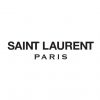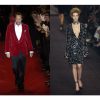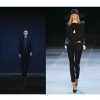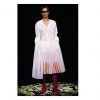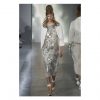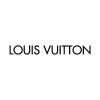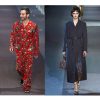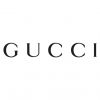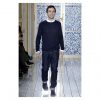Warning: Undefined variable $listtag in /home/storage/752/3595752/user/htdocs/wp-content/plugins/image-gallery-reloaded/image-gallery-reloaded.php on line 202
Deprecated: preg_replace(): Passing null to parameter #3 ($subject) of type array|string is deprecated in /home/storage/752/3595752/user/htdocs/wp-includes/formatting.php on line 4810
I still remember the news about Tom Ford leaving Gucci, in 2003. It was the first break up between a luxury brand and a high profile designer in this era dominated by conglomerates. It was a big shock because, to me, Gucci was Tom Ford and vice-versa. Over a decade later, this musical chair has never been more intense. After the Frida Giannini years, Alessandro Michele’s success, with a completely different aesthetic from his predecessors, put in evidence a new reality, perhaps dangerous to luxury but increasingly common: the brand image is more volatile than ever!
I started to better think about it after last week rumours surrounding the exit of Hedi Slimane from Saint Laurent (where there’s smoke, there’s fire). Personally, I don’t like his style and don’t think it is linked to Yve’s legacy, besides, I still see as ridiculous his diva behaviour and feud over Twitter with Cathy Horyn, then New York Times fashion critic. Nevertheless, the brand’s commercial success shows exactly the contrary and Hedi’s rumoured exit will probably be about contractual disagreements with Kering. Back to the point, since Yves’ retirement from prêt-à-porter, Alber Elbaz, Tom Ford, Stefano Pilati and Slimane have shown truly different visions. Now, if Anthony Vaccarello step up to the job he is likely to propose a sexier version of Saint Laurent, as he is known for creating sexy pieces.
Let’s talk about another case: Dior. From Gianfranco Ferré to John Galliano, the maison went through a complete overhaul. Bill Gaytten tried to keep Galliano’s philosophy until Raf Simons came with his minimalist and modernist approach. What about the next designer, which direction he (or she) will follow? Despite the differences, all of them worked over Christian Dior’s idea of romance, recreating the iconic New Look. I wonder if the new ‘chosen one’ will keep the tradition. Recent rumours points to Sarah Burton. Even though her designs for Alexander McQueen have a good romantic dose, Dior’s approach is more ladylike. How she will adapt?
Going back to John Galliano, currently at Margiela, he is trying to insert more daring and colourful feelings to a brand that represented the extreme opposite of his flamboyant, theatrical creations. Martin Margiela was such a low profile designer that he refused to appear whilst Galliano used to wear costumes to take his bow after each show! But, who cares?
Another point to discuss: Nicholas Ghesquère was able to develop his Balenciaga vision barely without any comparison with the founder, since the brand was dormant for decades. He was inspired by streetwear and multiculturalism, but also knew how to create remarkable collections by sourcing the maison’s couture archives. At Louis Vuitton, he has a double challenge: to keep or not Marc Jacobs’s legacy, which by the way didn’t imprint a specific style, and decide if the clothes are just accessories to bags, or if they deserve a more influential role. So far, the bags are absolute winners.
All this musical chair of designers and designs expose a dilemma: to keep or update the image created by the founders or leave it up to each creative director? If commercial success comes quickly, it doesn’t matter. But there’s the real danger. Luxury brands need heritage. Obviously, they don’t need to stick to an image created over half a century ago, that doesn’t resonate with today’s reality. Nevertheless, the allure and the sophistication that link with consumers, creating identification, may weaken.
As recent reports show a slowdown in sales and deceleration in the Chinese market, isn’t a good time to think about the reasons in consumer disinterest? Overexposing brands, with too many stores, contribute to this fatigue, but a fragile image, only supported by marketing efforts to maintain a media presence, may be one of the greatest culprits. Perhaps the consumer is searching for consistency to justify a purchase and this needs to come from a solid brand image. After all, luxury is not something ephemeral as a season trend.
Readings to inspire
Deluxe: How Luxury Lost its Lustre, Dana Thomas
The Luxury Brand Balancing Act, Business of Fashion

